From racing the school bus to racing across the country in all kinds of ways
Imagine a random weekday in the late 80s in Alabama in a small suburban community outside Birmingham. The school bus drops off a kid who immediately sprints down the street, grabs a bicycle, and chases the bus around the neighborhood. That kid was me, and one of the most vivid memories I have of those chases was the taste of blood climbing the steep hills in my efforts.
Many years later, I'd recall that taste a few times going for KOMs during our unofficial weekly Strava showdowns in the early 2010s. Amazingly, I could push myself hard enough chasing the bus around the neighborhood and twenty-five years later chasing Strava KOMs, but I never had that happen during a race at any level from amateur Cat 5 all the way through professional races like the Athens Twilight night race. And never during my ultra distance races like the Race Across America in 2015 and 2017 or the Tour Divide in 2022. I chalk that up to a conservative race mentality focused on conserving energy and putting out the minimal effort necessary to cover or sustain an attack. But it also speaks to how deep one can dig when concrete, measurable goals are on the line and the only way to achieve them is through solo effort and not race strategy.
How did I get from there to here?
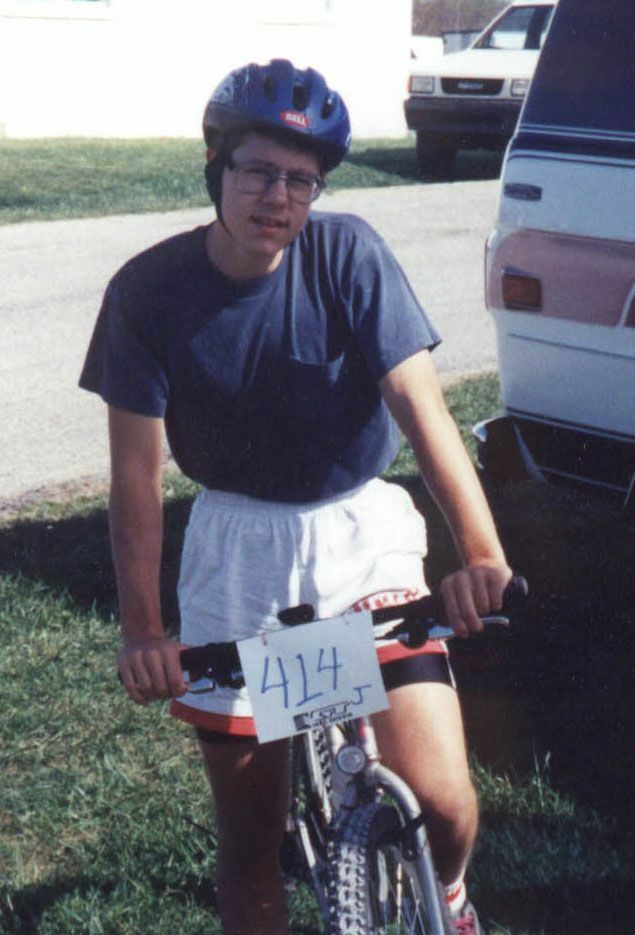 Let's rewind and see how I went from racing a school bus to bikepacking across the country. A few years after racing the school bus, I jumped into racing as a high school senior via a 40k time trial, mountain bike race, criterium, and road race -- four very different disciplines. Hooked on racing, I headed off to college at Clemson University to study computer engineering and race my bicycle all over the South.
Let's rewind and see how I went from racing a school bus to bikepacking across the country. A few years after racing the school bus, I jumped into racing as a high school senior via a 40k time trial, mountain bike race, criterium, and road race -- four very different disciplines. Hooked on racing, I headed off to college at Clemson University to study computer engineering and race my bicycle all over the South.
It was during college that I discovered the adventure side of cycling, including long distance riding through an annual 200 miler I created from printed maps and navigated via note cards. For three years in a row, I raced the Michelin Classic criterium in Greenville, SC as my final race of the season followed by the 200 miler the next weekend before the daylight savings time change. Each year, I'd find myself weaving my way up Brasstown Bald in the old 11x23 gearing everyone used in the 90s with another 100 miles to go.
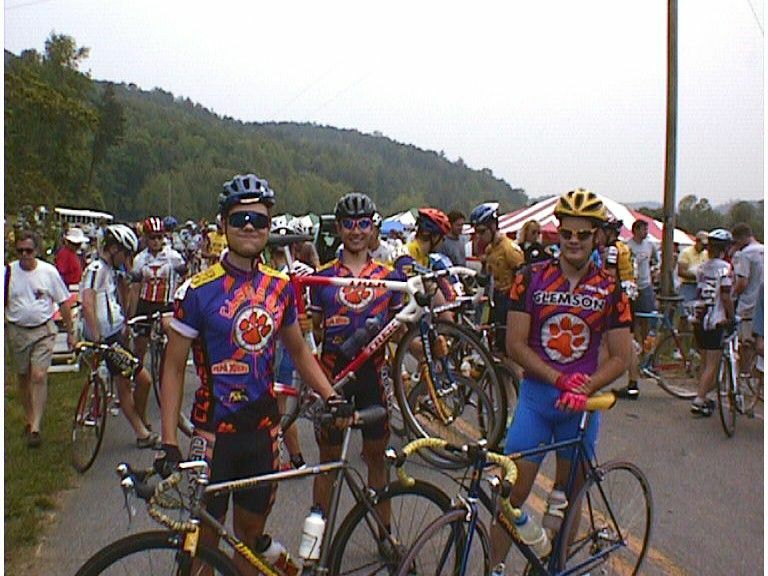
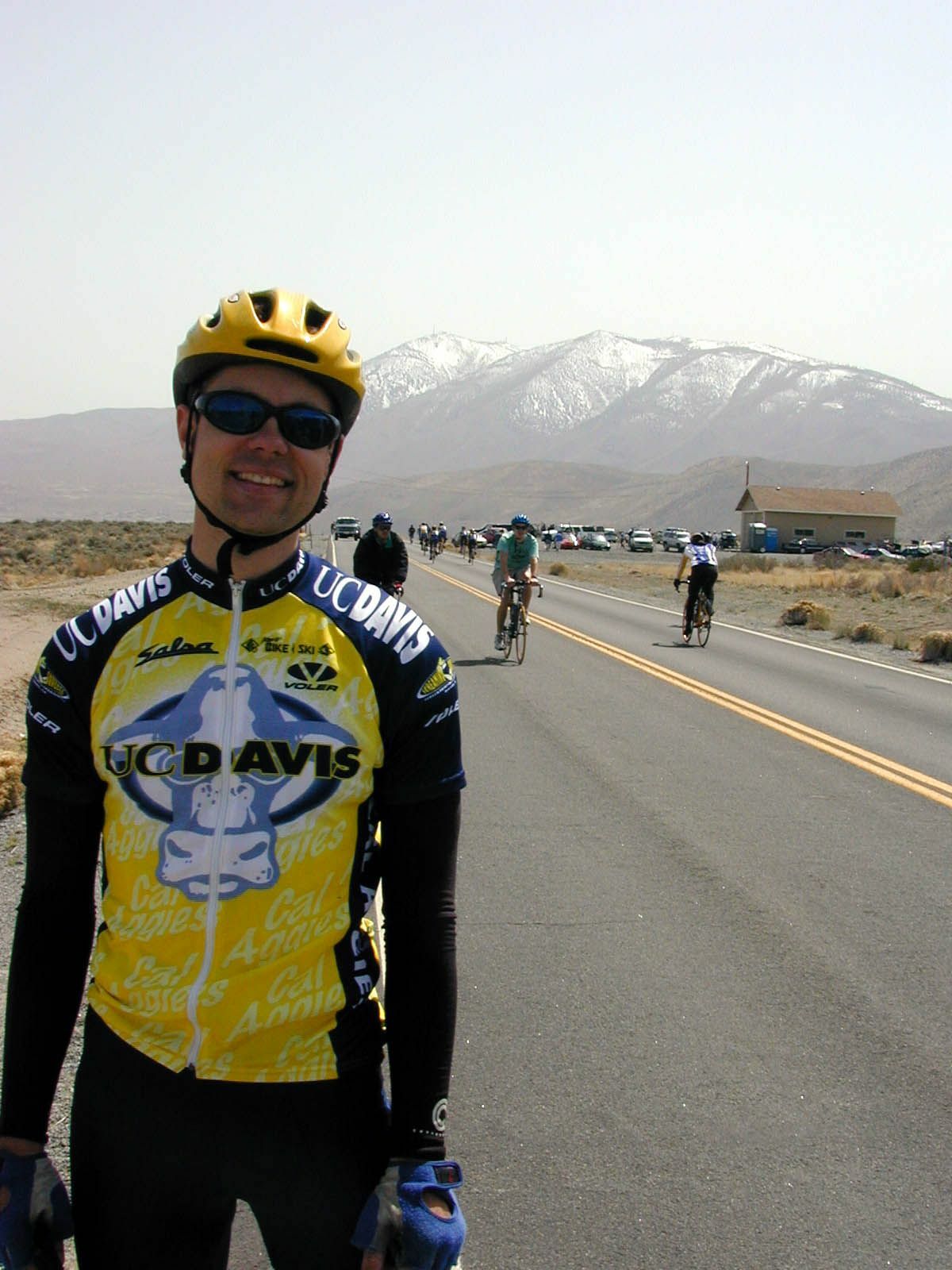 By the time I graduated and headed out to California to pursue a PhD at UC Davis, I was pretty burnt out on racing. I wasn’t completely off the bike, however, as I rode my bike everywhere and raced a few collegiate races, too. It was during my time in Davis that the idea of using a bike for transportation everywhere really took hold.
By the time I graduated and headed out to California to pursue a PhD at UC Davis, I was pretty burnt out on racing. I wasn’t completely off the bike, however, as I rode my bike everywhere and raced a few collegiate races, too. It was during my time in Davis that the idea of using a bike for transportation everywhere really took hold.
After six and a half years, with a beautiful wife and six-month old daughter, we moved back to Alabama in 2005 where I began teaching computer science at Samford University. I also began training again, focusing initially on triathlons leading up to Ironman Florida in November 2006. I joined a local race team in 2007 and dove headfirst into bike racing again. I wrapped up that season with a Pro/1/2 podium finish at the very same Michelin Classic in Greenville that I raced every October while studying at Clemson. This gave me enough points to begin racing as a Cat 1 from 2008 until 2015. 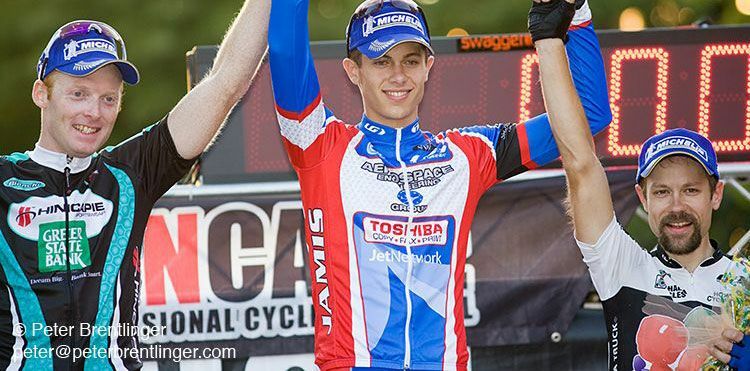
My Strava journey - bringing my home to the world and vice versa
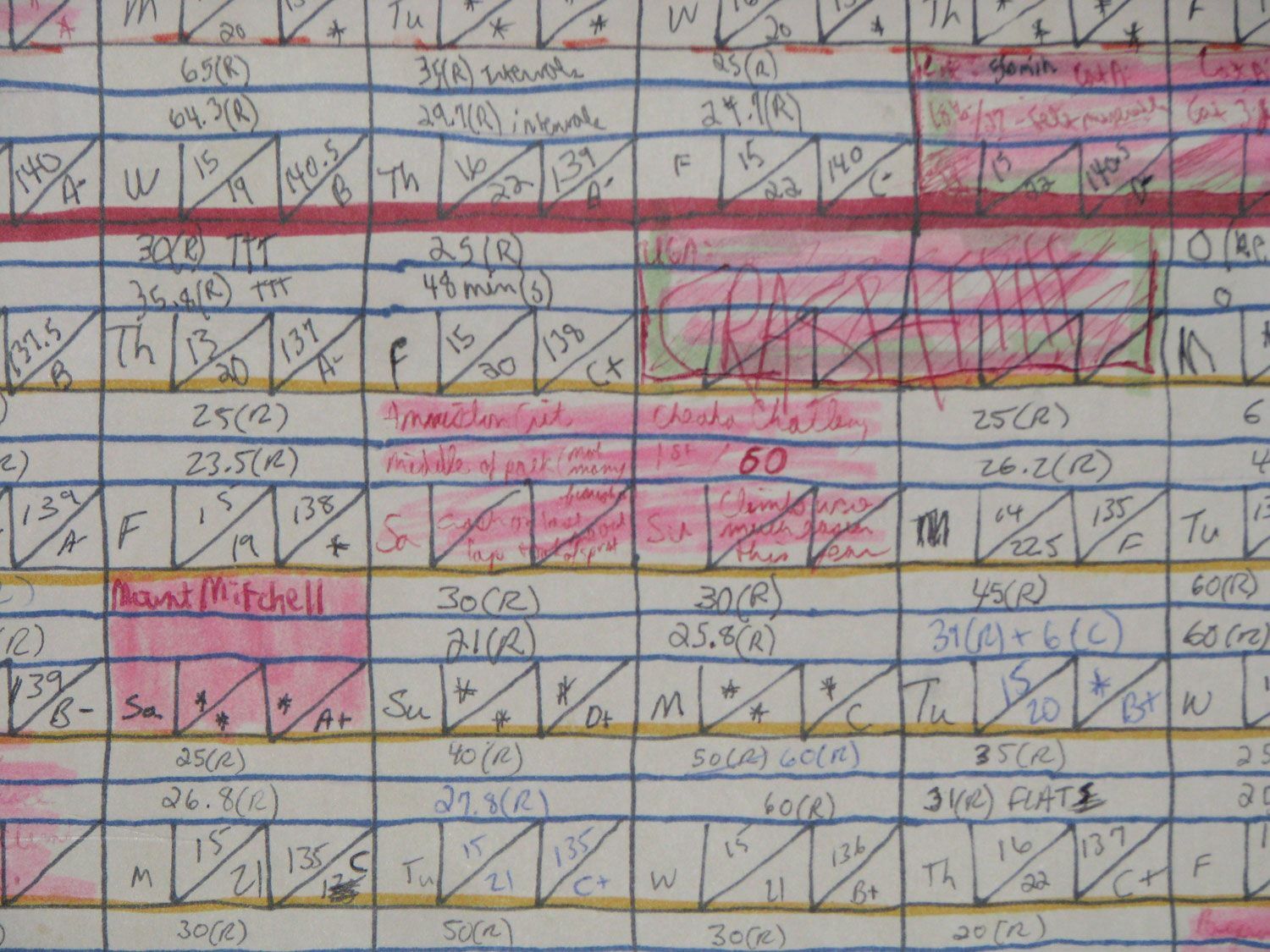 Logging my miles and data has always been a priority. Initially, I wrote down the mileage and resting/standing heart rate data for every day of the year on Eddie Borysewicz training posters I created in college. I was focused on trying to improve my race results. After a couple years I started recording the same data in a Microsoft Access database with room to write notes for each day. When I purchased a heart rate monitor, I switched to using the logging software it came with, which was even more detailed. Finally, I purchased my first GPS in 2008 and joined Strava which immediately became a huge part of my cycling journey chronicling all the epic adventures (report) over the years.
Logging my miles and data has always been a priority. Initially, I wrote down the mileage and resting/standing heart rate data for every day of the year on Eddie Borysewicz training posters I created in college. I was focused on trying to improve my race results. After a couple years I started recording the same data in a Microsoft Access database with room to write notes for each day. When I purchased a heart rate monitor, I switched to using the logging software it came with, which was even more detailed. Finally, I purchased my first GPS in 2008 and joined Strava which immediately became a huge part of my cycling journey chronicling all the epic adventures (report) over the years.
In the early days of Strava, there were no challenges. Instead, it was a simple worldwide leaderboard showing the top five people in a few different categories. It was the first time it was possible for the average person to compare their rides and be inspired by people all over the world. I found myself on the leaderboard frequently, and this led to me connecting with other Strava athlete adventurers through the comments on rides. And I absolutely loved (and still do) showcasing the beauty of Alabama through my rides. At the end of 2011, Strava introduced challenges with the Rapha Festive 500 followed in the spring by a climbing challenge sponsored by Specialized. I ended up winning that one after losing the one before to a rider from England training in California.
Throughout the majority of my training and racing, I used Strava to keep track of my training and report on all the adventures I seemed to stumble into almost whenever I started pedaling. Throughout the rest of this post, I link to Strava activities documenting this journey.
Racing across the USA
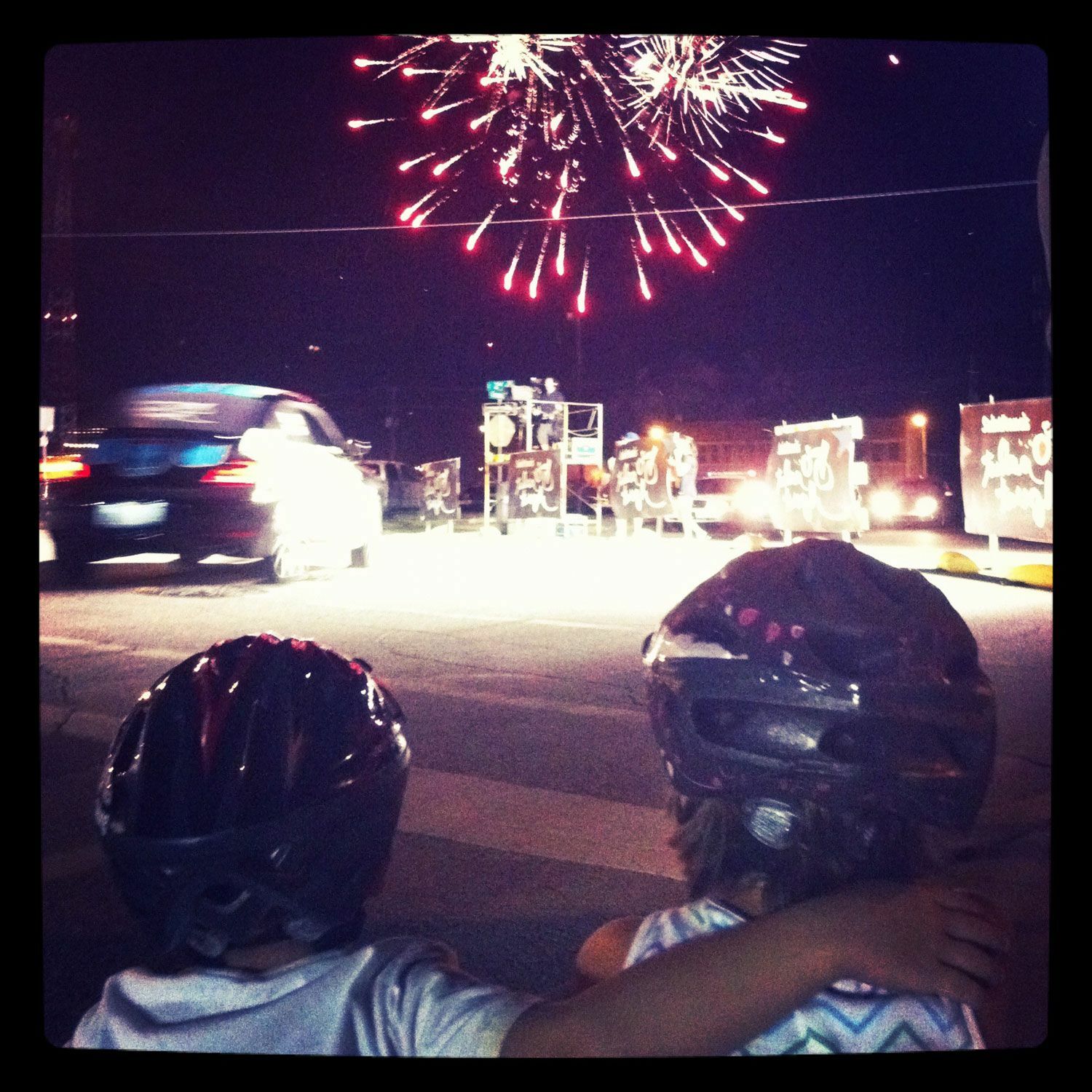 I have so many pictures of my kids at bike races all over the USA through the years. Strava's ability to add pictures to rides originally was strictly through an Instagram integration, and it doesn't look like a lot of my old rides have pictures attached. I am going to go back through and try to add pictures to some of these old activities. The point, in the end, wasn't the racing, but rather seeing the country together as a family. My daughter as an 8 month old is sitting on a blanket investigating a leaf at a bike race -- that picture has been framed and behind our kitchen sink for 18 years. She just started college this fall.
I have so many pictures of my kids at bike races all over the USA through the years. Strava's ability to add pictures to rides originally was strictly through an Instagram integration, and it doesn't look like a lot of my old rides have pictures attached. I am going to go back through and try to add pictures to some of these old activities. The point, in the end, wasn't the racing, but rather seeing the country together as a family. My daughter as an 8 month old is sitting on a blanket investigating a leaf at a bike race -- that picture has been framed and behind our kitchen sink for 18 years. She just started college this fall.
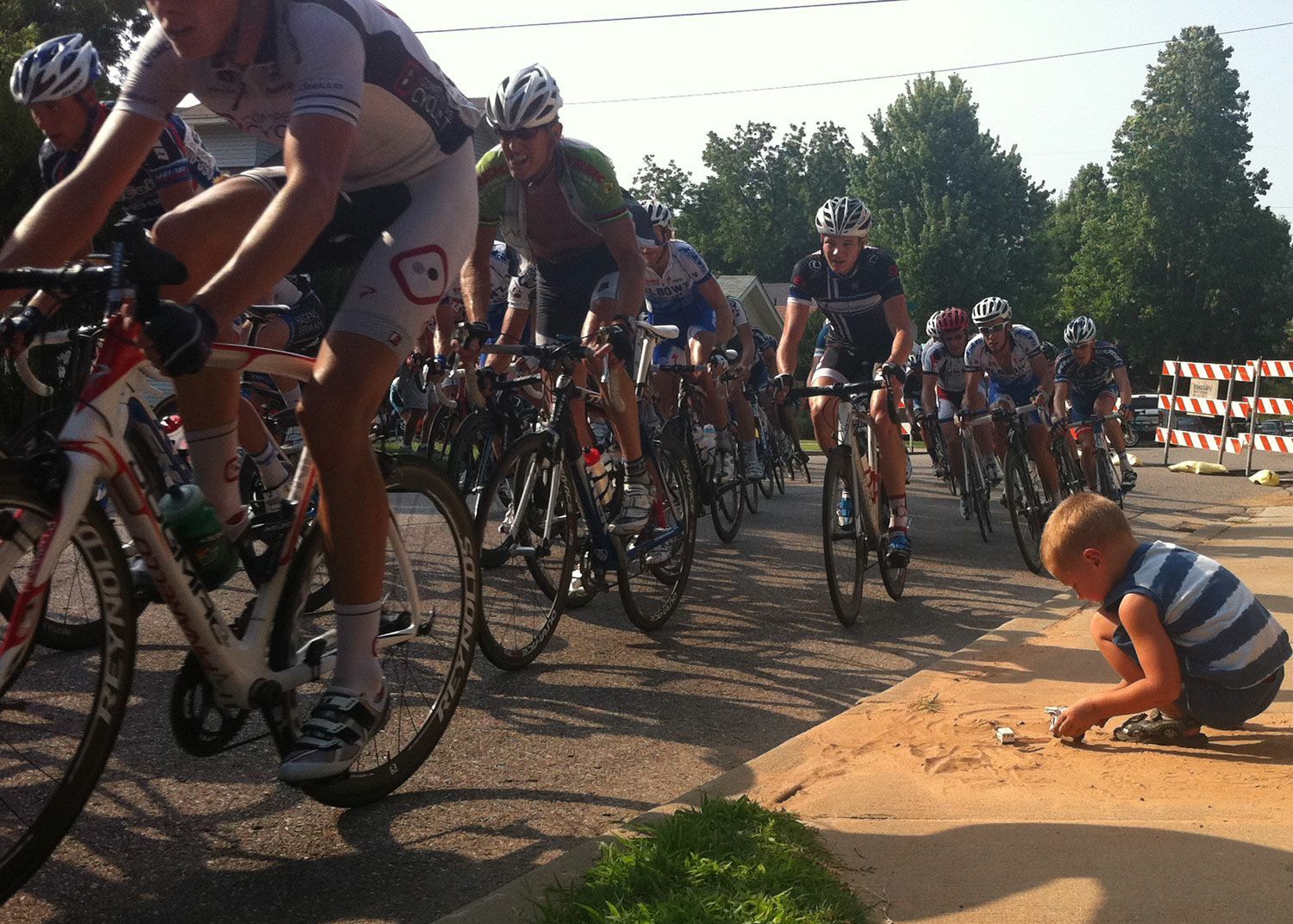 My wife snapped similar pictures of both kids during the 2012 Tulsa Tough criterium weekend on our way back from visiting family in Flagstaff, Arizona and qualifying for the Leadville 100 mountain bike race via a fourth place finish in the Barn Burner 104 where my Garmin popped off on lap 1 lost forever to the Arizona mountain desert. Two weeks later, my wife saw me sprint to an 11th place finish in the elite amateur national road race in Augusta, Georgia. Later that summer, my wife and I would drive back to Leadville where I finished 39th, struggling a bit with the altitude. A decade later during Day 12 of the 2022 Tour Divide, I would take a vastly different route, but still connect two of the cities that we stayed in before the Leadville race started.
My wife snapped similar pictures of both kids during the 2012 Tulsa Tough criterium weekend on our way back from visiting family in Flagstaff, Arizona and qualifying for the Leadville 100 mountain bike race via a fourth place finish in the Barn Burner 104 where my Garmin popped off on lap 1 lost forever to the Arizona mountain desert. Two weeks later, my wife saw me sprint to an 11th place finish in the elite amateur national road race in Augusta, Georgia. Later that summer, my wife and I would drive back to Leadville where I finished 39th, struggling a bit with the altitude. A decade later during Day 12 of the 2022 Tour Divide, I would take a vastly different route, but still connect two of the cities that we stayed in before the Leadville race started.
In the summer of 2009, we drove as a family from Alabama to Bend, Oregon to race the Cascade Cycling Classic visiting family in Flagstaff and friends in California on the way out. On the way back, we drove to Chicago to race the Tour of Elk Grove, where I spent a few seconds on the wheel of Chris Horner in his Astana kit before getting dropped on the last lap of the long road course.
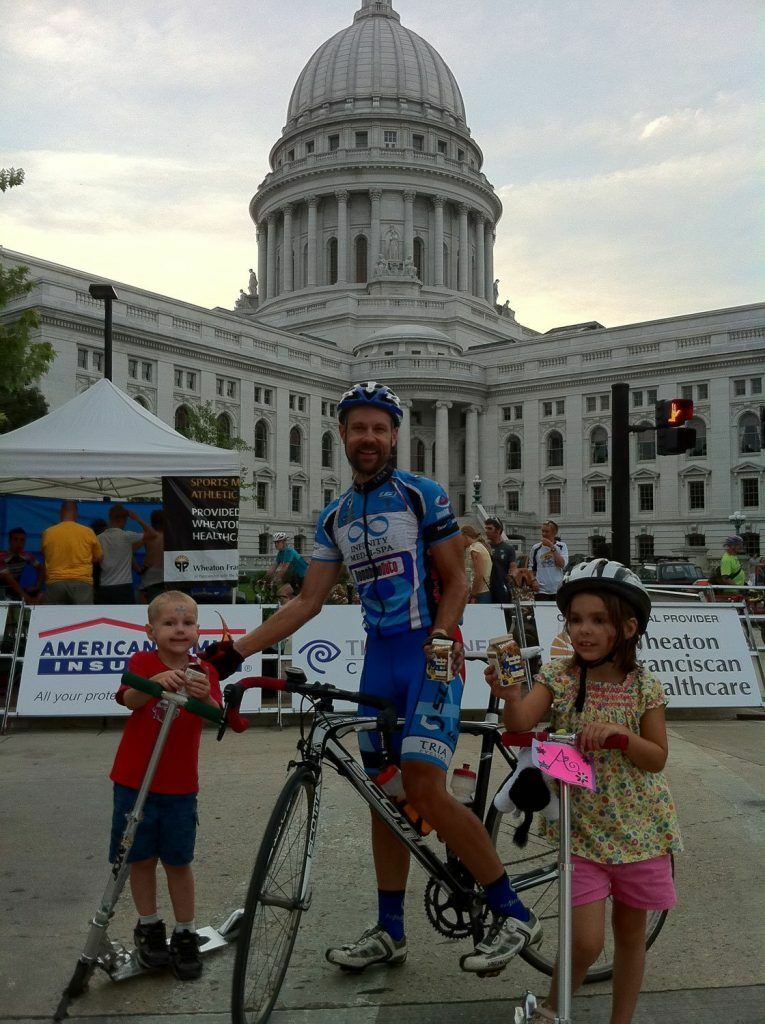 Most of my racing was the local races in the southeast including the bigger criteriums such as Athens Twilight and the Sunny King criterium headlining the national racing calendar and eventually the separate national criterium calendar. These races were part of the USA criterium series that I followed around the country racing in Texas, Alabama, Georgia, North Carolina, and Pennsylvania ultimately placing 9th overall in the series in 2010.
Most of my racing was the local races in the southeast including the bigger criteriums such as Athens Twilight and the Sunny King criterium headlining the national racing calendar and eventually the separate national criterium calendar. These races were part of the USA criterium series that I followed around the country racing in Texas, Alabama, Georgia, North Carolina, and Pennsylvania ultimately placing 9th overall in the series in 2010.
Other summers saw us spending weeks in Wisconsin racing nationals as well as the Tour of America's Dairyland while visiting family. In 2014 while training for my first Race Across America, I placed 65th in the national road race in Madison and then less than 12 hours later, I headed out to bike 315 miles across the hills of southwestern Wisconsin to see family in northwestern Wisconsin.
High impact transitions to ultra racing and bikepacking
Both of these transitions were marked by me getting hit by cars. I had already been eyeing the Race Across America in 2013 when a friend invited me to do a multi-day charity fundraising ride on the Natchez Trace Parkway. Afterwards, I rode from the end in Natchez, Mississippi all the way back home to Birmingham. It was eye-opening, especially during the heat of summer, but it instilled in me the confidence to take on the challenge of the Race Across America. The question was when?
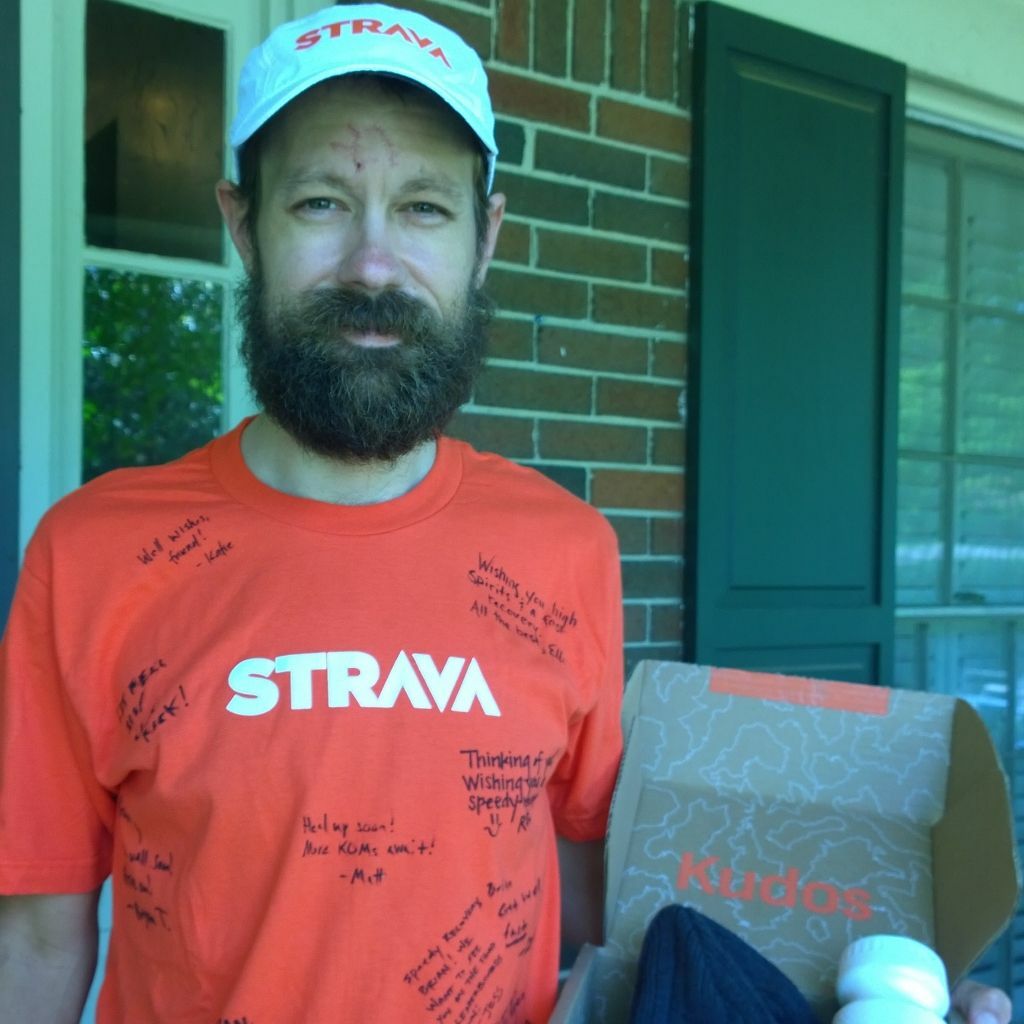 My "regular racing" was going great with placings in national events, but I still had the dream of doing even better. A year later as I lay painfully in the hospital after slamming 40mph into the side of a car making a turn, I started to contemplate life and decided to commit fully to ultra racing. After a week in the hospital thankful to be alive but with my jaws wired shut for at least two months, I began riding again to get ready for the 2014 24-hour mountain bike nationals in Gallup, NM. I had to rely on milkshakes and smoothies I could drink from a straw on my long 5+ hour rides. One week before the race, the doctor cut the wires off and gave me a stern warning not to open my mouth wide or I risked breaking my jaw again. I ended up a disappointing 7th when I had a great shot at making that podium barring everything leading up to the race.
My "regular racing" was going great with placings in national events, but I still had the dream of doing even better. A year later as I lay painfully in the hospital after slamming 40mph into the side of a car making a turn, I started to contemplate life and decided to commit fully to ultra racing. After a week in the hospital thankful to be alive but with my jaws wired shut for at least two months, I began riding again to get ready for the 2014 24-hour mountain bike nationals in Gallup, NM. I had to rely on milkshakes and smoothies I could drink from a straw on my long 5+ hour rides. One week before the race, the doctor cut the wires off and gave me a stern warning not to open my mouth wide or I risked breaking my jaw again. I ended up a disappointing 7th when I had a great shot at making that podium barring everything leading up to the race.
I continued to race high level races into 2015, frequently riding to the race from my house, doing the race, and riding home leading to 300+ mile days with a race in the middle. But my results were suffering from all the miles in my legs, with an exception here or there. By the time the Race Across America started in June, I had already ridden 15,000 miles for the year! This was too many miles, even for ultra racing. And I was tired even before the start of the race. This was one of many lessons I learned during the 2015 Race Across America.
2016 was amazing, but life happens and I didn't get to travel to any of the bigger races that I would have liked to have done "one more time". I raced locally and had moderate results, but clearly, I was on my way out from regular racing. I did much better in the 2017 Race Across America with all that I had learned from the 2015 race. Both of these races were fully supported by amazing follow crews, but it was during the training for RAAM that I learned to appreciate the adventures and challenge of exploring completely new areas, sometimes quite remote, cut off from everyone and uncertain of the outcome. This made me think about the Tour Divide bikepacking race, a 2700+ mile solo self-supported race through the Rocky Mountains from Canada to Mexico.
Transition to bikepacking
After the 2017 Race Across America, I broke my collarbone in a high speed crash at the end of the Pensacola Cycling Classic road race. I recovered quickly and was commuting home from work when a car hit me from behind on a 55mph speed limit road never having seen me. I landed in the windshield, saving my life, but when the driver hit the brakes I was sent flying forward leading to severe road rash on the top of my foot which had been pulled out of my shoe by the impact.
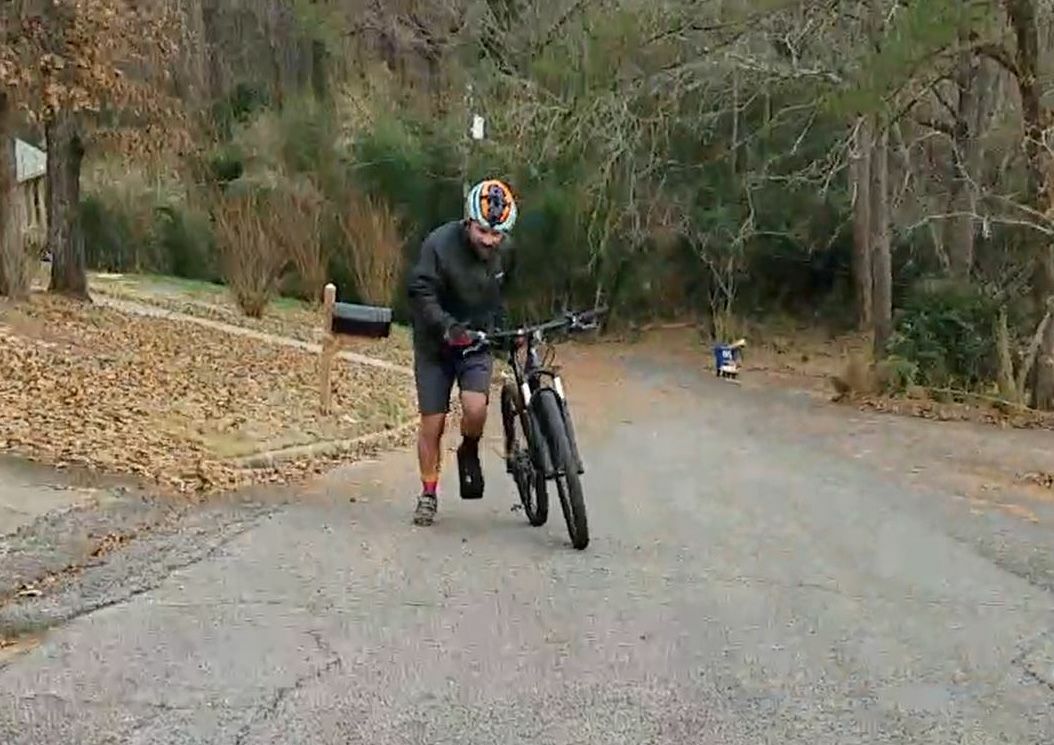 After a week in the hospital, I left confined to a knee scooter and crutches for a few months. When I was finally able to resume riding, I opted for the mountain bike so I could more comfortably leave the road and ride through the grass or dirt on my daily commutes to/from work. By the spring of 2018, I was back to racing again, winning the Skyway 280 bikepacking race, wearing a medical boot.
After a week in the hospital, I left confined to a knee scooter and crutches for a few months. When I was finally able to resume riding, I opted for the mountain bike so I could more comfortably leave the road and ride through the grass or dirt on my daily commutes to/from work. By the spring of 2018, I was back to racing again, winning the Skyway 280 bikepacking race, wearing a medical boot.
By the end of the summer, I completed a long 750 mile bikepacking trip before racing the Trans North Georgia (TNGA) 350-ish mile brutal bikepacking race once again sporting a medical boot. When I tried to go back to shoes, I discovered that for multi-day rides, the pain in my foot would build to unbearable levels. The solution was sandals, ultimately leading to this year's Tour Divide and my ride back home from the finish in sandals. I transitioned from a mountain bike to a gravel bike and did all my bikepacking races and high school coaching in 2019, 2020, and 2021 on the gravel bike to get ready for the Tour Divide.
A long family drive to the start
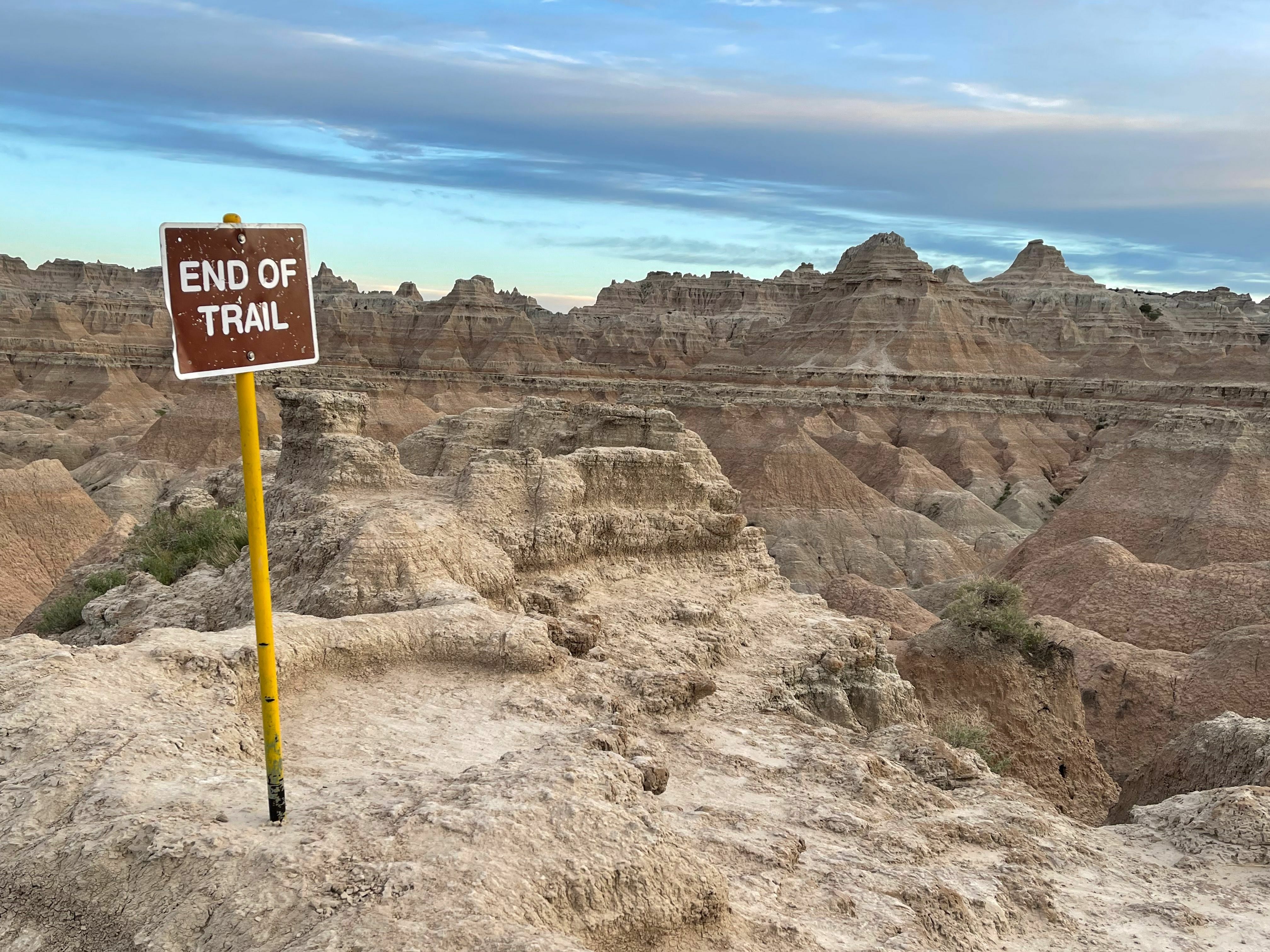 Fifteen years after diving head-first into bike racing again, we set out on another long bike-race associated cross-country family drive - 3,000 miles from Birmingham, Alabama to Banff, Canada to the start of the 2022 Tour Divide. With my daughter having just graduated high school and wanting to visit Canada, this was the perfect opportunity to visit amazing places along the route in both the USA and Canada. With all that we saw and with how much fun and adventure we had along the way, I told my wife the day before the race that no matter what happens, this trip has already been a win.
Fifteen years after diving head-first into bike racing again, we set out on another long bike-race associated cross-country family drive - 3,000 miles from Birmingham, Alabama to Banff, Canada to the start of the 2022 Tour Divide. With my daughter having just graduated high school and wanting to visit Canada, this was the perfect opportunity to visit amazing places along the route in both the USA and Canada. With all that we saw and with how much fun and adventure we had along the way, I told my wife the day before the race that no matter what happens, this trip has already been a win.
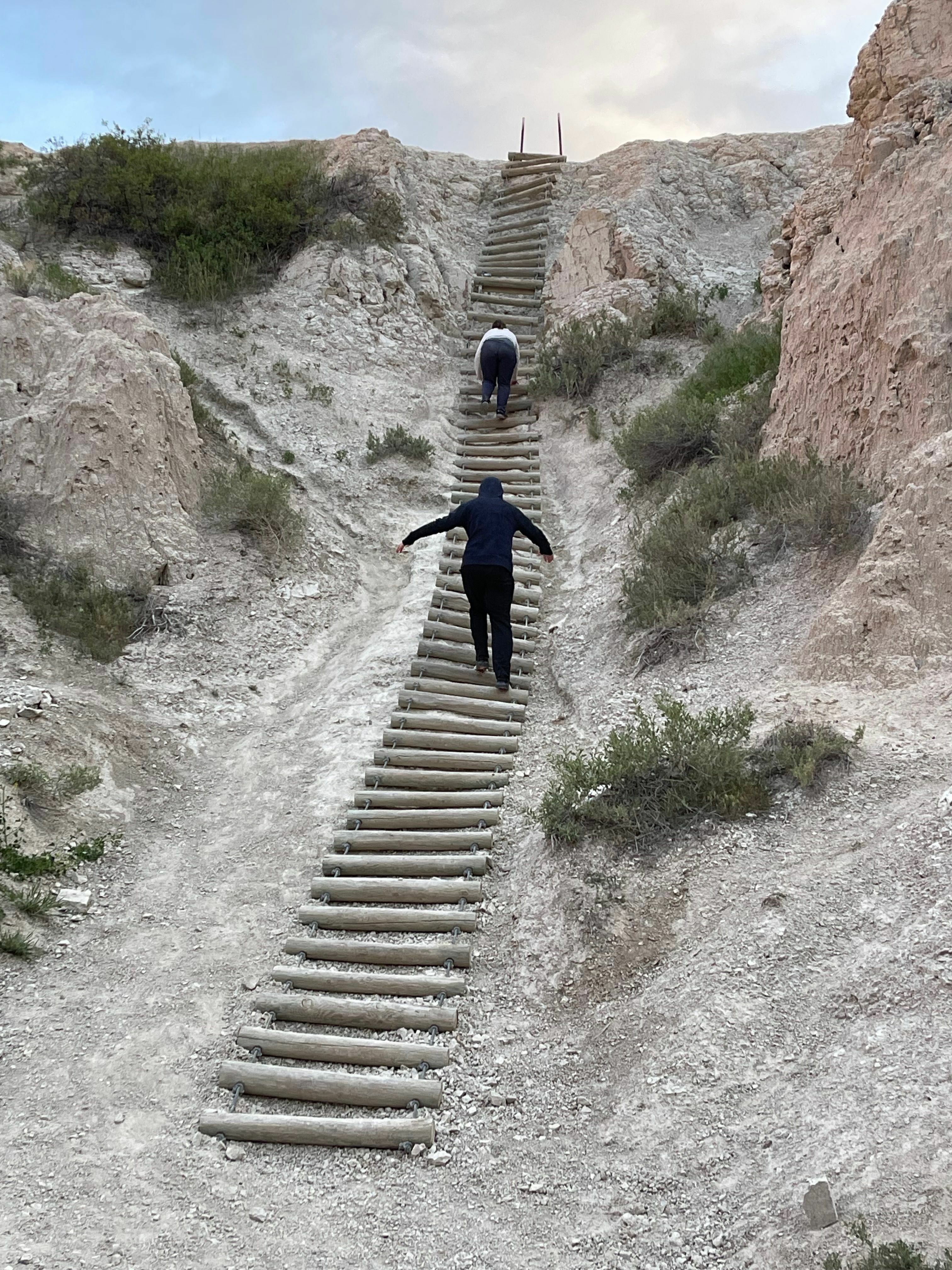 What was incredible to me along the way was how many rides and races I could recall from states along the route: Alabama, Mississippi, Tennessee, Arkansas, Missouri, Kansas. But as we crossed through the Iowa/Nebraska border area up into South Dakota, we had reached much less familiar territory. Our first major stop was the Badlands National Park of South Dakota where we spent a night, seeing countless stars guided by the park rangers on the first night and then getting up early for a cold sunrise hike the next morning. "June" and "cold" aren't two words that go together in Alabama. It's pretty much impossible to be cold in June even in a torrential downpour. Yet there we were in South Dakota seeing temps dipping down into the 40s.
What was incredible to me along the way was how many rides and races I could recall from states along the route: Alabama, Mississippi, Tennessee, Arkansas, Missouri, Kansas. But as we crossed through the Iowa/Nebraska border area up into South Dakota, we had reached much less familiar territory. Our first major stop was the Badlands National Park of South Dakota where we spent a night, seeing countless stars guided by the park rangers on the first night and then getting up early for a cold sunrise hike the next morning. "June" and "cold" aren't two words that go together in Alabama. It's pretty much impossible to be cold in June even in a torrential downpour. Yet there we were in South Dakota seeing temps dipping down into the 40s.
After our sunrise hike, we stopped by to see the prairie dogs outside the park and then later a drive-through bear experience and attached zoo followed by a brief visit to Mount Rushmore. The next day, we drove over and

